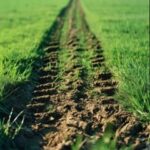We are all aware of the ongoing debate in relation to foreign investment in agricultural land in Australia and that it is a hot political issue.
Feelings can run high and a large majority (81%) of Australians are against the Australian Government allowing foreign investors to buy Australian farmland to grow crops or farm livestock, with 63% saying they are strongly against.
I was recently asked to comment on Dick Smith’s rejection of foreign investment in agriculture, specifically in S. Kidman & Co Ltd. Mr Smith is one of Australian Agricultural Company’s biggest shareholders. The question I would pose to Mr Smith – would his approach be different if he was a shareholder in S. Kidman & Co?
About 95% of the nation’s farms are family owned. Despite adverse conditions that commonly affect regional areas such as droughts, floods and increasing salinity, these family farms demonstrate a remarkable degree of resilience. However, the reality is that the most productive farms are largely commercial, non-family based farms. The challenge thus facing Australian agriculture is to turn the family farms into more productive and commercially viable units.
It is important to put foreign investment in context.
In 2013, foreign investment in Australia totalled around $170 billion of which only 2.2% ($3.6 billion) was associated with agriculture. The vast majority was mining ($50 billion), manufacturing ($30 million) and services ($20 billion).
In the five years ending in June 2012, the regulatory authority in Australia, the Foreign Investment Review Board, approved $12.6 billion worth of investment in agriculture which amounted to only about 1.5% of the $844.8 billion in approved foreign investment in all Australian enterprises.
The countries investing in Australian agricultural land over that period included Canada (25%), United Kingdom (22%), USA (12%), UAE (5%), New Zealand (4%) and China (less than 1%).
In recent months, Thynne + Macartney’s Agribusiness Group has been involved in two signature deals in the beef sector involving foreign investment:
“Wollogorang” situated in the Gulf of Carpentaria in the north of Australia, an area of over 709,000 hectares (over 2,700 square miles) running approximately 40,000 head of cattle bought by a Chinese billionaire Mr Xingfa Ma for AUD$47 million. Mr Ma already owns an extensive portfolio of pastoral properties in Australia.
“Walhallow” and “Cresswell Downs” situated in the Barkly Tablelands in the Northern Territory, an area of over 999,000 hectares (over 3,800 square miles) running approximately 50,000 head of cattle bought by interests associated with Mr Brett Blundy, one of Australia’s richest individuals now living in Singapore for AUD$100 million. Again, Mr Blundy has extensive interests in pastoral Australia. The seller of “Walhallow” and “Cresswell Downs” was Paraway Pastoral Company Limited, Macquarie Bank’s rural trust – itself a foreign owned investment vehicle.
Both transactions required the consent of the Foreign Investment Review Board which was obtained without undue delay or hindrance.
While such acquisitions will continue to be monitored by the Federal Government (foreign owners, existing and future, are now required to register their interests) the reality is Australian broadacre agriculture has been and will continue to be largely reliant on foreign investment.
Thynne + Macartney’s Agribusiness Group (while based in Brisbane on Australia’s east coast) services the entire northern part of Australia, particularly in relation to the beef industry.




